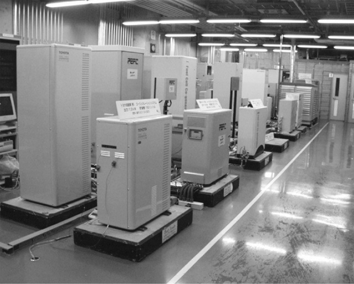It is estimated that the carbon footprint of a building powered by solid-oxide fuel cells (SOFCs), is around half of the carbon footprint of a conventional building. Solid-oxide fuel cells resemble a piece of ceramic.
They efficiently combine fossil-fuel natural gas with oxygen from the air, but without burning, to generate electricity. The main advantage for building’s fitted with solid-oxide fuel cells is that they can generate power, on site, without losing energy to heat and friction as in a conventional power plant or to transmission losses in a national grid.
1